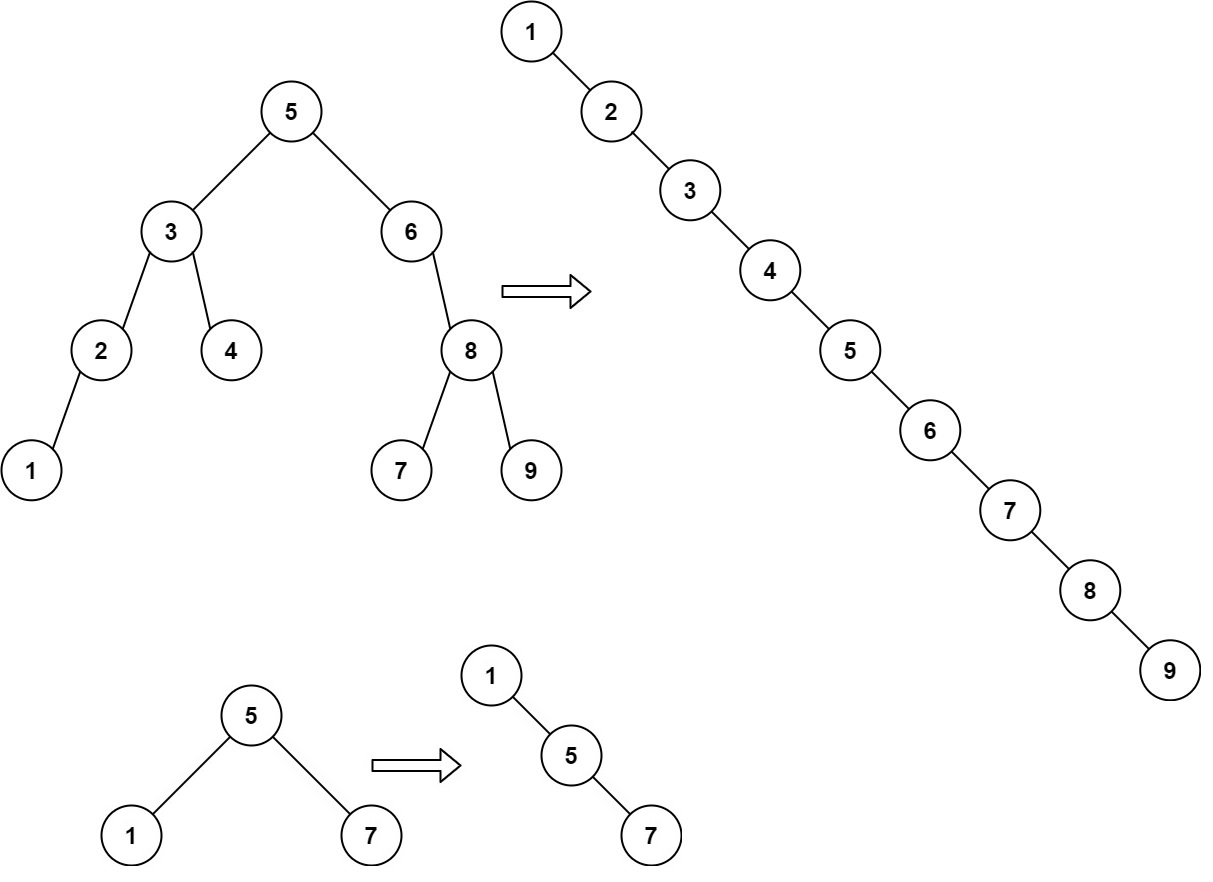Teaching Kids Programming: Videos on Data Structures and Algorithms
Given the root of a binary search tree, rearrange the tree in in-order so that the leftmost node in the tree is now the root of the tree, and every node has no left child and only one right child.
Example 1:
Input: root = [5,3,6,2,4,null,8,1,null,null,null,7,9]
Output: [1,null,2,null,3,null,4,null,5,null,6,null,7,null,8,null,9]Example 2:
Input: root = [5,1,7]
Output: [1,null,5,null,7]Constraints:
The number of nodes in the given tree will be in the range [1, 100].
Inorder Traversal Algorithm to Convert Binary Search Tree to Increasing Order Search Tree
When we perform a inorder traversal on a Binary Search Tree, we get a sorted list. A Binary Search Tree is a binary tree where the left nodes are strictly smaller than the root nodes, and the right nodes are strictly larger than the root nodes. And also, there is no duplicate nodes.
The inorder gives us a sorted list, then we can build the tree aka increasing order search tree where it does not have left kids which is just like a singly linked list.
1 2 3 4 5 6 7 8 9 10 11 | class Solution: def increasingBST(self, root): def dfs(root): if not root: return [] return dfs(root.left) + [root.val] + dfs(root.right) ans = cur = TreeNode(None) for v in dfs(root): cur.right = TreeNode(v) cur = cur.right return ans.right |
class Solution:
def increasingBST(self, root):
def dfs(root):
if not root:
return []
return dfs(root.left) + [root.val] + dfs(root.right)
ans = cur = TreeNode(None)
for v in dfs(root):
cur.right = TreeNode(v)
cur = cur.right
return ans.right We can also implement as a iterator which yields as we need.
1 2 3 4 5 6 7 8 9 10 11 12 13 | class Solution: def increasingBST(self, root): def inorder(node): if not node: return yield from inorder(node.left) yield node.val yield from inorder(node.right) ans = cur = TreeNode(None) for v in inorder(root): cur.right = TreeNode(v) cur = cur.right return ans.right |
class Solution:
def increasingBST(self, root):
def inorder(node):
if not node:
return
yield from inorder(node.left)
yield node.val
yield from inorder(node.right)
ans = cur = TreeNode(None)
for v in inorder(root):
cur.right = TreeNode(v)
cur = cur.right
return ans.rightSpace/Time complexity is O(N) as we need to visit N nodes exactly once, and need space for Recursion or storing the inorder traversal list.
–EOF (The Ultimate Computing & Technology Blog) —
loading...
Last Post: Teaching Kids Programming - Tree Detection Algorithm via Union Find + Disjoint Set (Determine a Binary Tree)
Next Post: Teaching Kids Programming - Kth Smallest Element in a BST via Recursive Inorder Traversal Algorithm
